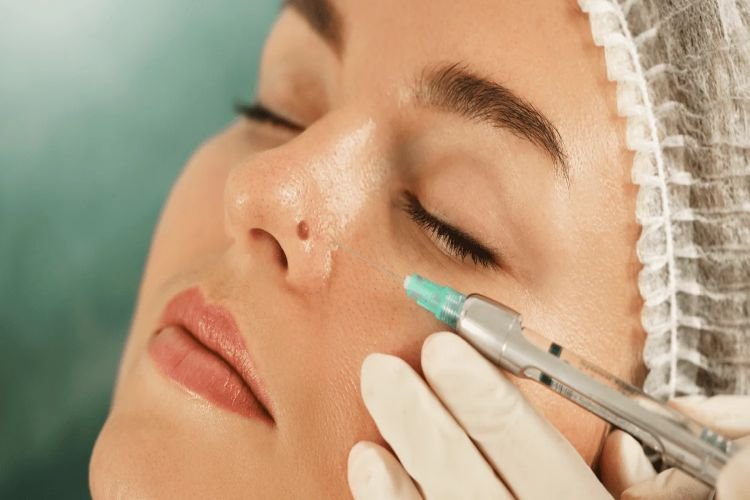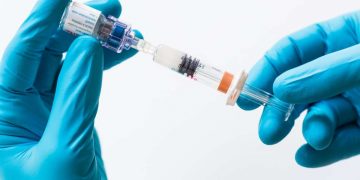 Are you concerned about a changing mole? Moles form when melanocytes cluster together, creating brown, black, or flesh-colored spots. While most are harmless, changes in size, color, shape, or texture need professional evaluation. The best mole removal Singapore offers various techniques, surgical excision, laser, or shave removal, tailored to mole type, location, and cosmetic preferences, ensuring both safety and minimal scarring.
Are you concerned about a changing mole? Moles form when melanocytes cluster together, creating brown, black, or flesh-colored spots. While most are harmless, changes in size, color, shape, or texture need professional evaluation. The best mole removal Singapore offers various techniques, surgical excision, laser, or shave removal, tailored to mole type, location, and cosmetic preferences, ensuring both safety and minimal scarring.
Table of Contents
Surgical Excision
Surgical excision removes the entire mole including its root structures beneath the skin surface. The dermatologist uses a scalpel to cut an elliptical shape around the mole, removing it along with a 2-4mm margin of surrounding healthy tissue. This margin helps ensure complete removal of all mole cells, particularly important for atypical or suspicious lesions.
The procedure begins with local anesthetic injection using lidocaine with epinephrine, which numbs the area and reduces bleeding. After excision, the dermatologist closes the wound with sutures – either absorbable ones that dissolve within 7-14 days or non-absorbable sutures requiring removal after 5-14 days depending on location. Facial sutures typically come out after 5-7 days, while body sutures remain 10-14 days.
Excision provides the advantage of complete mole removal with minimal recurrence risk. The removed tissue undergoes histopathological examination, allowing definitive diagnosis of whether the mole contains abnormal cells. This analysis takes 5-7 working days and provides important information about cellular structure, depth of involvement, and presence of any concerning features.
Recovery involves keeping the wound clean and dry for the first 48 hours, then applying prescribed antibiotic ointment twice daily. The linear scar initially appears red and raised, gradually fading to a thin white line over 6-12 months. Scar length typically measures 3-4 times the original mole diameter due to the elliptical excision shape required for proper wound closure.
Laser Removal
Laser mole removal uses concentrated light energy to break down pigmented cells layer by layer. CO2 lasers vaporize tissue through ablation, while Q-switched lasers target melanin, fragmenting pigment for natural body absorption. The procedure works for flat, superficial moles without deep dermal components.
Treatment begins with topical anesthetic cream applied 30-45 minutes before the procedure. The dermatologist then directs laser pulses at the mole, with each pulse lasting milliseconds. Patients feel mild stinging sensations similar to rubber band snaps. Small moles under 5mm diameter typically require one session, while larger or darker moles need 2-4 sessions spaced 4-6 weeks apart.
Post-laser care involves immediate cooling with ice packs to reduce thermal damage to surrounding tissue. The treated area forms a shallow wound that heals through re-epithelialization over 7-10 days. During this period, the area appears raw and weepy, requiring petroleum jelly application and non-stick dressing changes twice daily. Complete healing with new skin formation occurs within 2-3 weeks.
Laser removal leaves minimal scarring when performed appropriately, though temporary hyperpigmentation or hypopigmentation may occur, particularly in darker skin types. The treated area remains photosensitive for 3-6 months, requiring diligent sun protection with SPF 50+ sunscreen. Unlike surgical excision, laser removal doesn’t provide tissue for histological analysis, making it unsuitable for suspicious or changing moles.
Shave Excision
Shave excision removes moles protruding above the skin surface using a horizontal cutting motion with a surgical blade or radiofrequency device. The technique preserves the deep dermis, removing only the raised portion and superficial mole cells. This approach works well for benign raised moles, skin tags, and seborrheic keratoses.
The procedure requires only local anesthetic injection at the mole base. Using a #15 blade or specialized dermablade, the dermatologist shaves the mole flush with surrounding skin level. Some practitioners prefer radiofrequency devices that simultaneously cut and cauterize, reducing bleeding. The entire process takes 5-10 minutes per mole.
Immediate hemostasis occurs through aluminum chloride application or light electrocautery. The shallow wound heals through secondary intention without sutures, forming new skin from the edges inward. Initial healing completes within 7-14 days, with the area appearing pink and slightly depressed. Over 2-3 months, the depression fills in as collagen remodels.
Shave excision offers rapid recovery with minimal activity restrictions. The circular scar typically matches the original mole diameter and becomes barely noticeable within 6 months. However, mole roots remaining in deeper skin layers may lead to recurrence in some cases, appearing as pigmented spots within the scar after several months or years.
Choosing the Right Method
Mole characteristics determine the most appropriate removal technique. Flat moles confined to the epidermis respond well to laser treatment, while raised moles with dermal components require physical removal through excision or shaving. Moles exhibiting asymmetry, border irregularity, color variation, diameter over 6mm, or evolution in appearance need surgical excision with histological examination.
Location influences technique selection significantly. Facial moles often undergo laser removal or surgical excision to minimize scarring in cosmetically sensitive areas. Moles on the trunk or extremities tolerate surgical excision well, as these areas typically heal with less noticeable scars. Areas with high tension or movement, such as joints or the upper back, require careful technique selection to prevent wound dehiscence or hypertrophic scarring.
Did You Know?
Moles can appear anywhere on the body, including areas never exposed to sunlight like between fingers, on scalp under hair, and even inside the mouth or under nails.
Cost considerations vary by technique and complexity. Surgical excision, laser removal, and shave excision have different price ranges depending on procedure complexity, mole size, and whether histological analysis is included.
Recovery and Aftercare
Post-removal care may impact healing quality and cosmetic outcome. Surgical excision sites typically require daily cleaning with saline solution, antibiotic ointment application, and keeping the area covered with sterile dressing for the first week. Suture care involves avoiding water exposure for 48 hours, then gentle cleaning around sutures without disrupting them.
Laser treatment aftercare focuses on promoting re-epithelialization while preventing infection. The raw surface needs constant moisture through petroleum jelly or prescribed healing ointments. Allowing the area to dry out may delay healing and increase scarring risk. Sun exposure should be avoided during initial healing, then minimized with physical barriers and sunscreen for 6 months.
Important Note
Any signs of infection including increasing pain, spreading redness, warmth, pus discharge, or fever require medical attention. A healthcare professional can determine if antibiotic treatment is needed.
Scar management begins once initial healing completes. Silicone gel sheets or gels applied daily may help flatten and fade scars. Gentle massage with vitamin E oil or bio-oil may improve scar pliability. Scar treatment should continue as collagen remodeling occurs.
Activity modifications depend on removal location and technique. Facial procedures may allow return to desk work but require avoiding strenuous exercise for 1-2 weeks. Body mole removal, particularly on joints or high-tension areas, may need modified activity to prevent wound separation. Swimming pools and hot tubs should be avoided until complete healing occurs.
What Our Dermatologist Says
Mole evaluation involves dermoscopy, a non-invasive technique magnifying skin structures 10-30 times. This reveals subsurface patterns invisible to naked eye examination, including pigment networks, dots, globules, and vascular patterns that indicate mole type and behavior.
The ABCDE criteria guide clinical assessment but don’t replace evaluation by a healthcare professional. Many benign moles exhibit some ABCDE features, while certain lesions of concern may appear normal. Regular skin checks allow tracking of mole changes over time through clinical photography and mole mapping.
Treatment timing may affect outcomes. Removing moles during cooler months reduces sun exposure complications during healing. Planning removal before major events requires allowing 3-6 months for complete healing and scar maturation. Patients with darker skin types may benefit from pre-treatment with lightening agents to reduce post-inflammatory hyperpigmentation risk.
Putting This Into Practice
- Schedule annual full-body skin examinations with photographic documentation to track existing moles and identify new growths
- Photograph your moles every 3-6 months using consistent lighting and distance, storing images chronologically for comparison
- Apply broad-spectrum SPF 50+ sunscreen to all exposed skin daily, reapplying every 2 hours during outdoor activities
- Choose removal timing based on your schedule, allowing adequate recovery before important events or sun exposure
- Prepare questions about removal options, downtime, and expected outcomes for your consultation
When to Seek Professional Help
- Mole exhibits asymmetry where one half differs from the other
- Border appears irregular, ragged, or blurred
- Color varies within the same mole with shades of brown, black, red, white, or blue
- Diameter exceeds 6mm or shows recent growth
- Mole changes in size, shape, color, or texture over weeks to months
- New mole appears after age 30
- Mole bleeds, itches, or becomes tender without trauma
- Mole develops a red halo or satellite lesions around it
- Previous mole removal site shows new pigmentation
Commonly Asked Questions
Does mole removal hurt?
Local anesthetic injection causes brief stinging lasting 5-10 seconds. Once numbness takes effect within 1-2 minutes, you feel only pressure or vibration during the procedure. Post-procedure discomfort resembles mild sunburn for laser treatment or paper cut sensation for excision, manageable with paracetamol.
Will my mole grow back after removal?
Surgical excision with clear margins provides permanent removal with low recurrence rates. Shave excision may result in pigment recurrence if deep mole cells remain. Laser removal of appropriate moles rarely leads to recurrence when treatment parameters are optimal.
How visible will the scar be?
Scar appearance depends on removal technique, location, individual healing, and aftercare quality. Linear excision scars fade to thin white lines within 12 months. Laser treatment typically leaves minimal to no visible scarring. Proper wound care and scar management can improve final appearance.
Can I remove multiple moles in one session?
Multiple mole removal is possible depending on locations and total number. Adjacent moles may require staged removal to ensure adequate blood supply for healing. Dermatologists can remove several moles per session, with larger numbers requiring assessment of overall wound burden.
When can I resume exercise after mole removal?
Light activities resume after 48-72 hours for small moles. Vigorous exercise waits 1-2 weeks for facial procedures and 2-3 weeks for body locations, particularly areas under tension. Premature activity increases bleeding, wound separation, and scarring risks.
Next Steps
Choose surgical excision for changing or suspicious moles to ensure complete removal and tissue analysis. Select laser removal for superficial moles in cosmetically sensitive areas. Consider timing to allow adequate healing before important events.
If you’re experiencing changes in existing moles such as size, color, or texture, or wish to remove moles for cosmetic reasons, a MOH-accredited dermatologist can provide comprehensive evaluation and treatment options.






